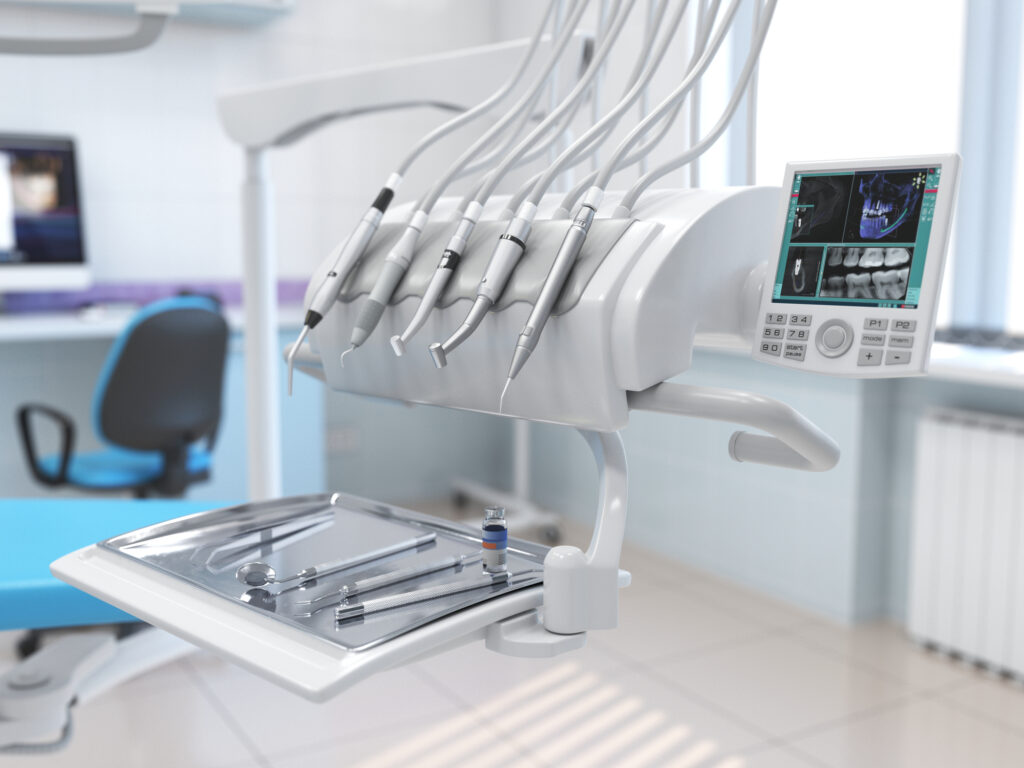
Welcome to the captivating world of orthodontics, where herstory has paved the way for a future filled with dazzling smiles and revolutionary advancements. From ancient civilisations employing unique methods to modern-day technological marvels, orthodontics has come a long way in transforming crooked teeth into works of art. In this blog post, we will delve into the evolution of orthodontics, explore the latest breakthroughs in technology and techniques, discuss the impact of digital dentistry on the field, and even venture into predictions for its promising future. So fasten your seatbelts as we take you on an exhilarating journey from the past straight into the awe-inspiring future of orthodontics!
The evolution of orthodontics
Ancient civilisations were no strangers to the desire for straighter teeth. Archaeologists have discovered mummified remains with metal bands wrapped around their teeth, suggesting that even in ancient times, people sought ways to correct dental misalignments. The Etruscans and Romans also dabbled in dental appliances made from gold wires and catgut.
Fast forward to the 18th century when orthodontics began taking shape as a recognised discipline. Pierre Fauchard, often referred to as the patriarch of modern dentistry, developed various devices using precious metals like silver and gold to help align teeth.
In the early 20th century, Edward Angle revolutionised orthodontics by introducing a systematic approach known as “Angle’s Classification.” This classification system categorised different types of malocclusions based on tooth position and jaw alignment.
The introduction of stainless steel in the 1930s brought about further advancements in orthodontic treatment options. Stainless steel allowed for stronger and more durable braces that could withstand the forces required for moving teeth into proper alignment.
As technology continued to evolve, so did orthodontics. In recent decades, we’ve witnessed an influx of innovative materials such as ceramic braces and clear aligners like Invisalign®, which offer discreet alternatives for those seeking orthodontic correction without conspicuous metal brackets.
The evolution of orthodontics has not only improved treatment outcomes but also enhanced patient comfort throughout their journey towards a picture-perfect smile. From humble beginnings rooted in ancient civilizations’ ingenuity to cutting-edge techniques driven by scientific research and technological advancements, this field continues its remarkable progression towards excellence – transforming lives one smile at a time.
Advancements in technology and techniques
Advancements in technology and techniques have transformed the field of orthodontics, making it more efficient and patient-friendly than ever before. With the development of digital imaging and 3D printing, orthodontists now have access to precise and accurate tools for diagnosis and treatment planning.
Digital imaging allows orthodontists to obtain detailed images of a patient’s teeth and jaws, enabling them to identify any abnormalities or misalignments. This information is then used to create customized treatment plans that are tailored to each individual’s specific needs.
In addition, 3D printing has revolutionized the manufacturing process for orthodontic appliances such as braces and aligners. Traditionally, these appliances were made by hand using molds taken from patients’ mouths. However, with 3D printing technology, orthodontists can now create precise replicas of a patient’s teeth using computer-aided design software.
This not only reduces the time needed for fabrication but also improves the overall accuracy and fit of the appliances. Patients can now enjoy more comfortable treatment experiences with shorter treatment times.
Furthermore, advancements in robotics have also made their way into orthodontics. Robotic systems can assist in performing certain dental procedures with enhanced precision and efficiency.
For example, robotic arms can be used during orthognathic surgery to accurately reposition the jawbone. This not only improves surgical outcomes but also reduces post-operative discomfort for patients.
These advancements in technology and techniques promise a bright future for orthodontics. With advancements in technology and techniques, as well as the rise of digital dentistry, the future of orthodontics promises to be even more exciting. As technologies continue to evolve at an exponential rate, we can expect even more innovative solutions that will further improve both the efficiency and effectiveness of orthodontic treatments.
The impact of digital dentistry on orthodontics
The impact of digital dentistry on orthodontics has been truly remarkable. With the advancement in technology, orthodontic treatment has become more precise and efficient. Digital imaging techniques such as cone beam computed tomography (CBCT) have revolutionized the way orthodontists diagnose and plan treatments.
Gone are the days when patients had to endure messy impressions for their braces or aligners. Now, with intraoral scanners, a 3D model of the patient’s teeth can be created within minutes! This not only eliminates discomfort but also provides a more accurate representation of the teeth structure.
Moreover, digital dentistry has paved the way for virtual treatment planning. Orthodontists can now digitally simulate how teeth will move during different stages of treatment. This helps them anticipate any challenges that may arise and allows for better customization of treatment plans.
Another significant impact is seen in clear aligner therapy, which has gained immense popularity over traditional braces due to its esthetic appeal. Digital technologies enable precise fabrication of these aligners using computer-aided design (CAD) software and 3D printing techniques.
Furthermore, digital tools allow for better communication between orthodontists and patients. Treatment progress can be monitored remotely through teleorthodontics platforms, reducing frequent visits to the clinic.
Digital dentistry has transformed orthodontics by enhancing precision, efficiency, and patient experience. As tefchnology continues to evolve rapidly in this field, we can expect even more exciting developments in the future!
Future predictions for the field of orthodontics
The field of orthodontics has come a long way since its inception, and it shows no signs of slowing down. One prediction for the future is the continued evolution of robotic dentistry. Robotic systems are already being used in various areas of medicine, and it’s only a matter of time before they become common in orthodontic practices. These robots will assist orthodontists by performing routine tasks such as bracket placement and wire adjustments with precision and accuracy that surpass human capabilities.
Another exciting development on the horizon is 3D printing in orthodontics. This technology allows for custom-made aligners and braces to be created quickly and efficiently. Patients can expect faster treatment times, improved comfort, and better overall results thanks to this innovation.
Additionally, virtual reality (VR) may play a significant role in shaping the future of orthodontics. VR technology can provide patients with immersive experiences that simulate different treatment outcomes or help alleviate anxiety during dental procedures. This could revolutionise patient education and engagement while enhancing their overall experience at the dentist’s office.
Furthermore, artificial intelligence (AI) is likely to have a profound impact on orthodontic diagnosis and treatment planning. AI algorithms can analyse vast amounts of patient data to identify patterns and create personalized treatment plans tailored to each individual’s needs. This integration between AI systems and traditional orthodontic practices will streamline processes while improving efficiency.
As we look ahead, it’s evident that these technological advancements will continue pushing boundaries within the field of orthodontics. The future promises increased convenience for both patients and practitioners alike through automation, enhanced treatment options through 3D printing capabilities, improved patient experiences through VR applications, as well as more precise diagnoses aided by AI technologies.
Female-Friendly Orthodontics: Understanding the Unique Needs of Women
Women often face distinct challenges when seeking orthodontic treatment. Hormonal fluctuations, pregnancy, and menopause can impact oral health and influence treatment outcomes. Recognizing these unique needs, female-friendly orthodontic practices prioritize a comprehensive approach that addresses the physical and emotional aspects of women’s oral health.

